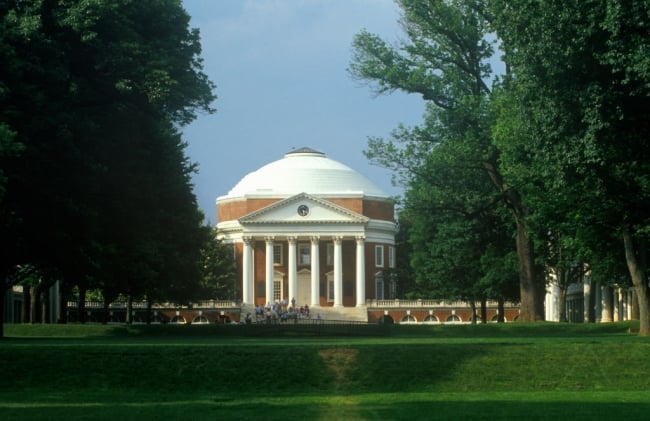You have /5 articles left.
Sign up for a free account or log in.

The University of Virginia's campus
Getty Images
The card catalog for the University of Virginia’s Alderman Library was once the only way to find needed books. Over four million cards cataloged each book’s location and from where it was donated.
Today, students and researchers use a digital catalog to find library materials, as is typical with most academic libraries. The card catalog, all 68 cabinets of it, was taken out of commission in 1989.
The university's library is set to undergo major renovations over the next three years, and for a while, the future of the card catalog seemed uncertain.
“There was no real disagreement on the potential research value of the card catalog,” said John Unsworth, dean of libraries at Virginia. “The question wasn’t, ‘Is it worth saving?’ It was, ‘Can we afford to save it?’”
There wasn't going to be enough room in the renovated Alderman Library for the massive set of cards, and scanning each card was estimated to cost almost half a million dollars. The university's administration planned to discard the collection.
Neal Curtis and Sam Lemley, two graduate students at the university who had worked previously with the card catalog, felt compelled to act. They presented a plan to load the card catalog into boxes, store it at a facility in Waynesboro, Va., during renovations, and then keep it in university-owned high-density storage. The estimated cost of this proposal was around $75,000, a good deal less than scanning the cards would be, although it would require about 180 hours of labor.
The two organized volunteer manpower to assist with the move and solicited donations to the library to pay for the project. They’ve so far raised about half of the needed funds.
The two Ph.D. candidates, who are both writing dissertations on literature, said that contrary to what some may believe, the project is not motivated by nostalgia. They said preserving the catalog is a gift to future researchers and historians.
“We’re not arguing for the superiority of the Alderman card catalog,” Curtis said. “[The card catalog and the digital catalog are] different. They tell us different things.”
“It’s a document of the history of the university,” Lemley said. “Who knows what’s lurking undiscovered?”
For example, if one wanted to find out how the library holdings changed as the university admitted its first women and first African American students, the card catalog would be the only place to find that information, they said. Ascertaining when a book and its card were added to the collection is not an exact science, but a combination of looking at the type of paper used and the assigned number can help.
“This is a snapshot of the library at the end of an era of analog discovery tools,” said Unsworth. “Our electronic catalogs don’t give us a way to reconstruct past states of the collection.” Once a book is gone from the stacks, it’s also gone from the digital catalog.
The boxes are set to be barcoded by library staff so future researchers can request boxes and read through them in the reading room. Unsworth said he's happy the catalog will be preserved for the future, but he noted that a digitized version, though more expensive, would probably still be preferable. That's because researchers could search through the holdings much more easily.
John Ulmschneider, dean of libraries at Virginia Commonwealth University, said he understands the decision by UVA to save the catalog, although VCU did not make the same decision. His institution has saved some cards related to its health and medicine collections, but disposed of most others. Though cost and space played into the decision, so did the relative research potential of the cards.
“VCU’s collections in health and medicine are extensive and deep,” Ulmschneider said via email. “That’s because those collections extend from its founding as the Medical College of Virginia in 1834.” But collections at the university for other disciplines often date back only to 1968. The cards for those collections didn’t have handwritten notes or other vital information on them, as UVA's cards often do.
“VCU has saved space and money by eliminating most of its card records,” Ulmschneider said. “But the richness and depth of collections and the card surrogates that describe them at older, distinguished universities like UVA may make it impossible to make the same choice.”




